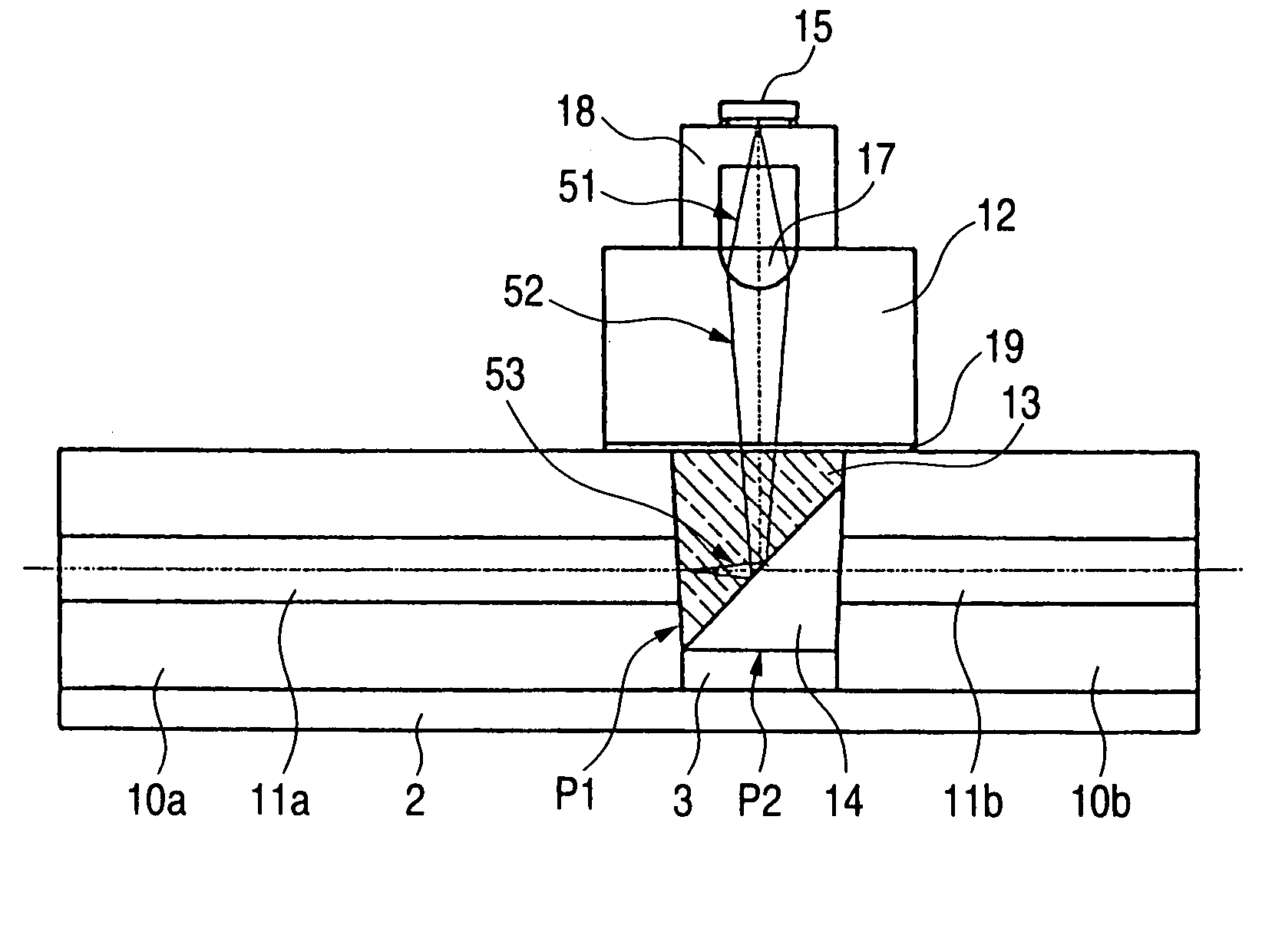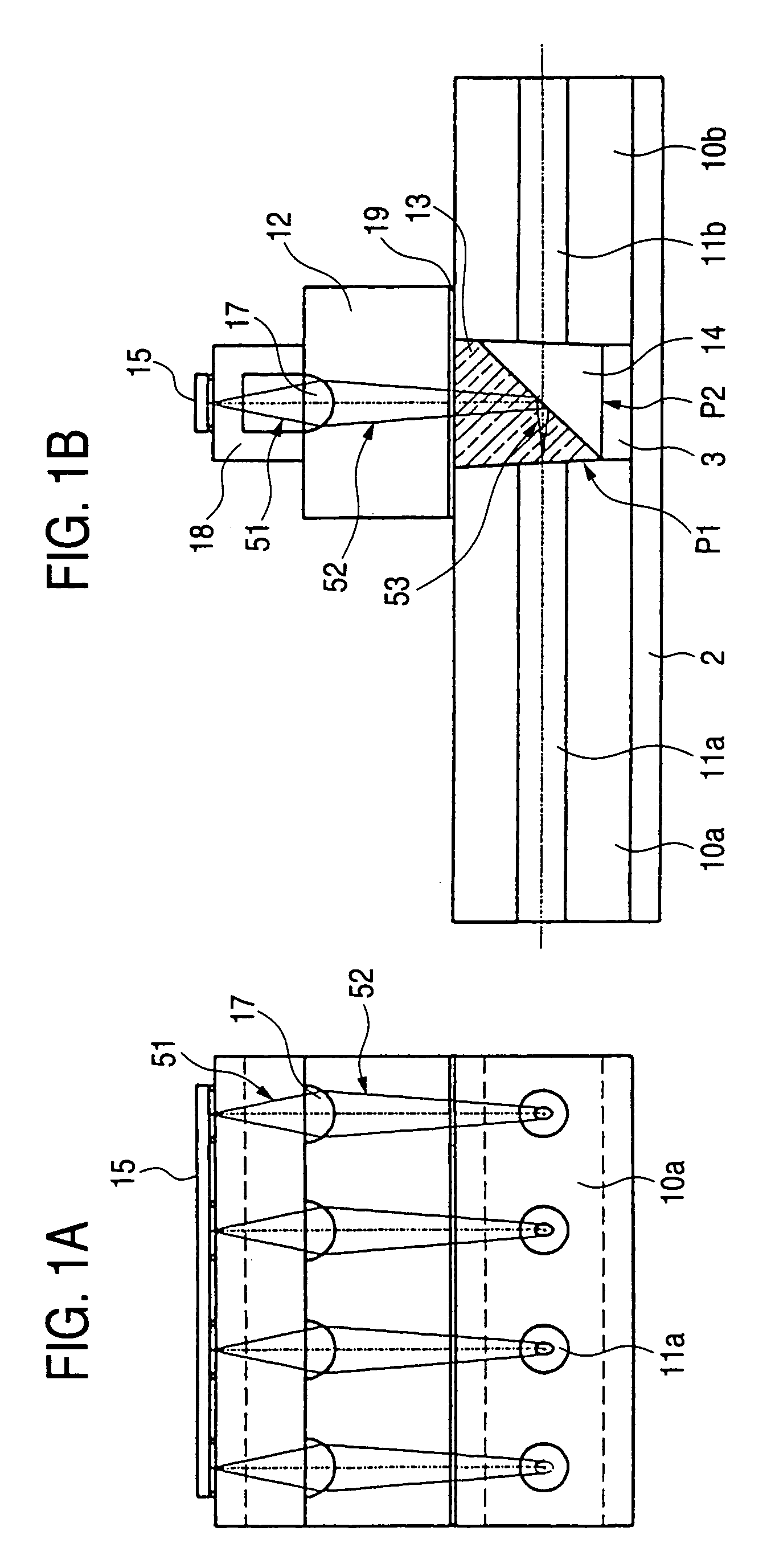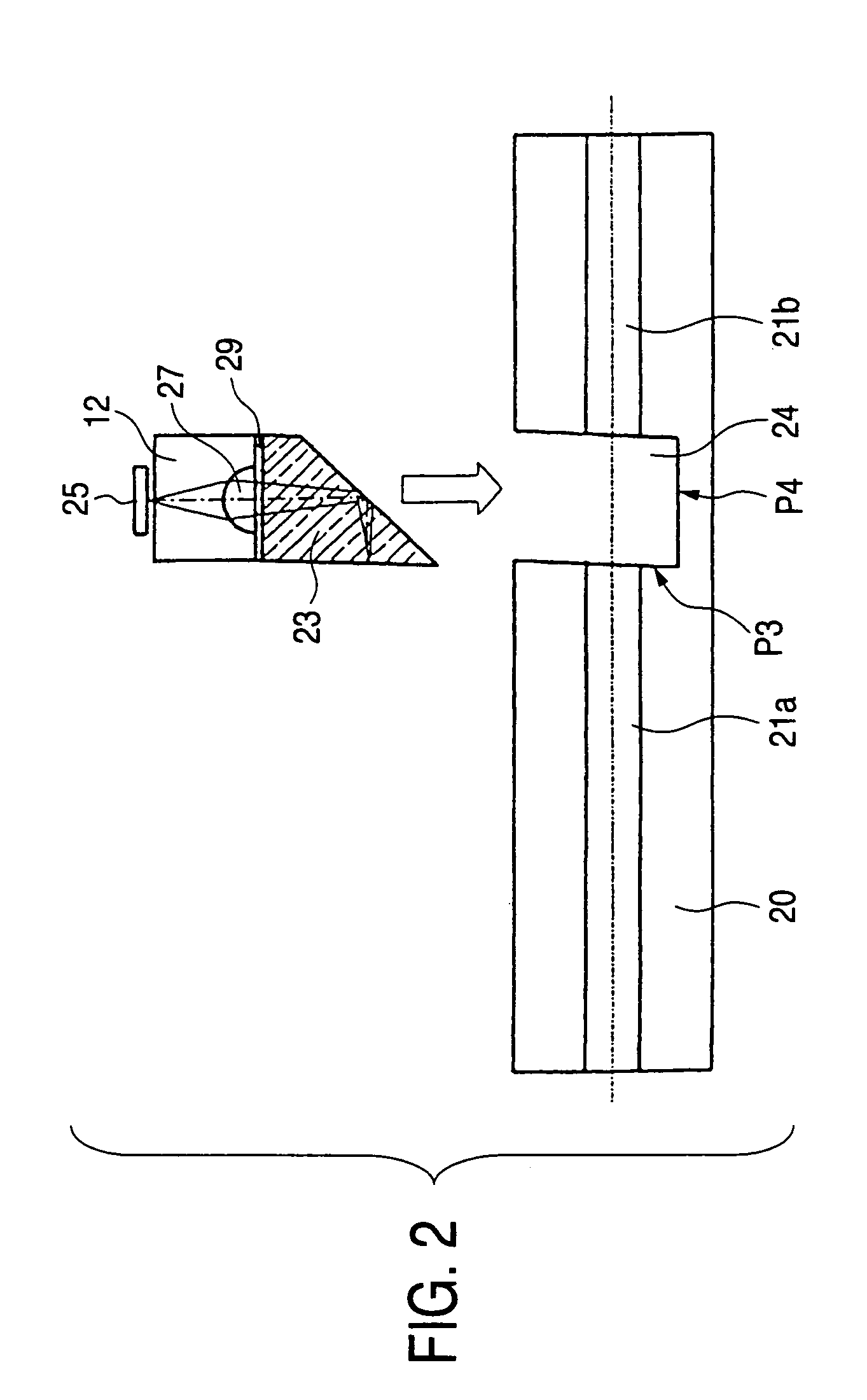Optical connection device
a technology of optical connection and optical pin, which is applied in the direction of optical elements, semiconductor lasers, instruments, etc., can solve the problems of increasing the distance between the wires, the interference of signals between the wiring circuit and the propagation delay caused by the increase in the wiring distance, and the difficulty of optical coupling, etc., to achieve efficient coupling with the optical waveguide
- Summary
- Abstract
- Description
- Claims
- Application Information
AI Technical Summary
Benefits of technology
Problems solved by technology
Method used
Image
Examples
embodiment 1
[Embodiment 1]
[0029]FIGS. 1A and 1B are views typically showing a first embodiment of an optical connection device according to the invention. A subject of this embodiment is an optical connection device for optically coupling light beams emitted from light-emitting elements such as a surface emission laser array 15 to an optical waveguide array 11a through a light-condensing unit such as a microlens array 17. FIG. 1A is a sectional view taken in a direction perpendicular to optical axes of the optical waveguides. FIG. 1B is a sectional view taken in a direction parallel to the optical axes.
[0030]As shown in FIG. 1A, the surface emission laser array 15 has a plurality of surface emission laser devices arranged in a row on a substrate at regular intervals of a pitch equal to the pitch of arrangement of optical waveguides in the optical waveguide array which will be described later. Although four devices are shown in FIG. 1A, the number of devices is not limited. Even a single device ...
embodiment 2
[Embodiment 2]
[0051]A second embodiment of the optical connection device according to the invention is functionally identical to Embodiment 1. In Embodiment 1, an optical waveguide array having a turning optical unit was integrated with a light source unit or with a photo detector unit, and the two units were brought into a facing contact with each other on a plane for adjustment to thereby be aligned with each other. This embodiment differs from Embodiment 1 in that the light source unit or photo detector unit and the turning optical unit are aligned and integrated into one body in advance, and after that the integrated body is fitted and fixed into the optical waveguides for connection.
[0052]Referring to FIG. 2, this embodiment will be described below. FIG. 2 is a sectional view taken in a direction parallel to the optical axes of the optical waveguides.
[0053]A microprism 23 is first stuck to a surface of a microlens array substrate 22 where a microlens array 27 is formed. A subst...
embodiment 3
[Embodiment 3]
[0060]FIGS. 3A and 3B are views typically showing a third embodiment of the optical connection device according to the invention. The function of the optical connection device according to this embodiment is as follows. A plurality of optical signals input from an optical waveguide array 31a are received by a plurality of photodetecting elements such as a photodiode array 36 and converted into electronic signals respectively. On the other hand, light beams emitted from a plurality of light sources such as a surface emission laser array 35 are coupled to an optical waveguide array 31b. The optical connection device according to this embodiment integrally formed from these arrays 31a, 31b, 35 and 36. FIG. 3A is a top view of the optical connection device. FIG. 3B is a sectional view of the optical connection device taken in a direction parallel to optical axes.
[0061]This embodiment is the same as in Embodiment 1 or 2 in that the micro-slit 34 is formed in an opto-electro...
PUM
 Login to View More
Login to View More Abstract
Description
Claims
Application Information
 Login to View More
Login to View More - R&D
- Intellectual Property
- Life Sciences
- Materials
- Tech Scout
- Unparalleled Data Quality
- Higher Quality Content
- 60% Fewer Hallucinations
Browse by: Latest US Patents, China's latest patents, Technical Efficacy Thesaurus, Application Domain, Technology Topic, Popular Technical Reports.
© 2025 PatSnap. All rights reserved.Legal|Privacy policy|Modern Slavery Act Transparency Statement|Sitemap|About US| Contact US: help@patsnap.com



